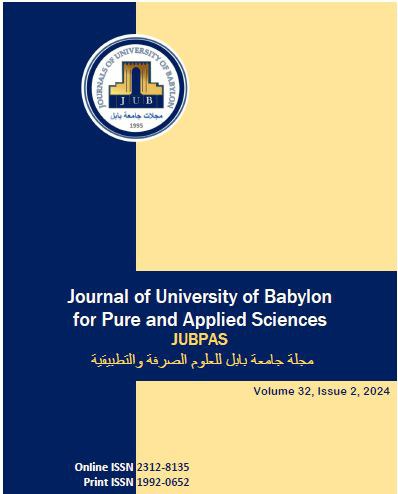The Efficiency of the Alu Insertion Sequence in Discrimination Among some Individuals
Main Article Content
Abstract
Background:
The Alu element is a widely distributed short interspersed nuclear element (SINE) in the human genome and has important applications in forensic science. The current study focused on assessing the effectiveness of Alu insertion polymorphism in forensic DNA profiling to identifying samples of some individuals living in the Babylon Governorate.
Materials and methods:
DNA was extracted From frozen blood samples (60) individuals were collected from Babylon - Al-Hilla Governorate from 8/8/2022 until 8/9/2022.
Results:
purified then a PCR technique Alu insertions were A(2q21.1)(111-115bp) 0.75, Alu deletion (0.25), B(8q23.1) (0.375) (0.625) C(13q34) (0.5)(0.5), D(15q23) (0.775) (0.225), E(16q23.3) (0.692) (0.308) and F(19q13.12)(0.616)(0.384) respectively.The alleles with Alu insertions at (2q21.1) were the most prevalent, whereas the Alu insertions at (8q23.1) were the least common. The similarity coefficient among individuals varied from 0.4 to 1, based on the proportion of genetic relatedness between them.
Conclusions:
Alu elements have efficacy in families’ discrimination it can be used more than one site, set of Alu insertion sequences should be used to accurate results.
Article Details
Section

This work is licensed under a Creative Commons Attribution 4.0 International License.
